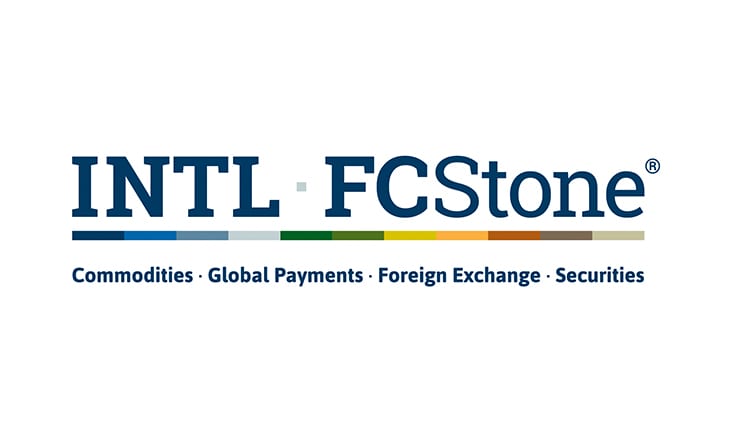Commodities and Forex broker INTL FCStone Inc. (NASDAQ:INTL) today announced its financial results for the fiscal year 2017 third quarter ended June 30, 2017. The highlights include:
- Operating Revenues up 13%, to $197.6 million
- Net Income of $12.7 million
- EPS of $0.66
Sean M. O’Connor, CEO of INTL FCStone Inc., stated:
Despite continued depressed volatility in our markets we achieved net earnings of $0.66 per share, an increase of 14% over the immediately preceding quarter but 15% below the prior year. As compared to the prior year, highlights for the quarter include strong growth in segment income in three of our operating segments: Global Payments was up 30% as a result of a 54% increase in payments and stable fixed expenses; Physical Commodities continued its strong rebound in both the precious metals and agricultural markets and was up nearly threefold; and Clearing and Execution Services nearly doubled due largely to the acquisition of the Derivative Voice Brokerage, Correspondent Clearing and Independent Wealth Management businesses. However, aggregate segment income was down 3% versus a year ago with Commercial Hedging, our largest segment, declining primarily due to weaker OTC revenues and Securities down, largely due to lower revenue capture in our Equity-Market Making business, driven by lower volatility in the equity markets.
Interest Income/Expense:
Overall interest income increased $4.0 million to $19.6 million in the third quarter, as a result of both an increase in short term interest rates and recent acquisitions. The acquisition of the Sterne Agee Correspondent Clearing business added an incremental $1.2 million in interest income, and the company’s domestic institutional fixed income business increased interest income $2.7 million in the third quarter over the prior year.
In addition, average customer equity in the Financial Ag & Energy and Exchange-traded Futures & Options components of INTL’s Commercial Hedging and Clearing and Execution Services (CES) segments increased 5% to $1.9 billion in the third quarter compared to the prior year, which combined with an increase in short-term interest rates resulted in an aggregate $1.6 million increase in interest income in these businesses. These increases were partially offset by a decline in our Corporate unallocated segment.
In the third quarter, the company recorded a minimal pre-tax unrealized loss on our remaining U.S. Treasury notes held as part of its interest rate management strategy. The prior year period included a $2.7 million pre-tax unrealized gain on interest rate swaps and U.S. Treasury notes held as part of the strategy. These unrealized gains/losses are recorded in our Corporate unallocated segment. During the first quarter of fiscal 2017, INTL liquidated all of its interest rate swap positions held as part of the strategy. During the second quarter of fiscal 2017, the company sold $865.0 million of U.S. Treasury notes under this strategy, leaving $290.0 million of U.S. Treasury notes outstanding, which will mature in calendar 2017.
The unrealized gains/losses on U.S. Treasury notes are reflected in interest income on the Condensed Consolidated Income Statements, while the unrealized gains/losses on interest rate swaps are included in trading gains, net. On a segment basis, these unrealized losses are reported in the Corporate unallocated segment, while the amortized earnings on these investments are included in the Commercial Hedging and CES segments.
Interest expense increased 45% to $11.2 million in the third quarter compared to $7.7 million in the prior year. The increase in interest expense is primarily related to $2.4 million of higher expense from our domestic institutional fixed income business as well as increased activity and short-term rates resulting in higher costs in our Exchange-Traded Futures & Options and Equity Market-Making businesses. Additionally, increased credit line capacity and higher average borrowings outstanding on our corporate credit facility, available for working capital needs, and our physical commodity financing facility resulted in increased expense.
